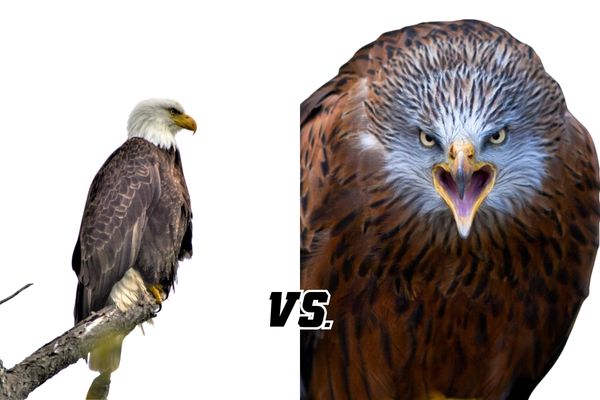All about Birds
The Battle of the Birds: Hawk vs Eagle
The hawk and the eagle are two of the most iconic birds in North America. They are both predators, and they share a number of features, including their sharp talons and hooked beaks. But there are some important differences between these two birds as well.
This article will compare and contrast the hawk and the eagle, in an effort to determine which one is the superior predator.
What are Hawks?
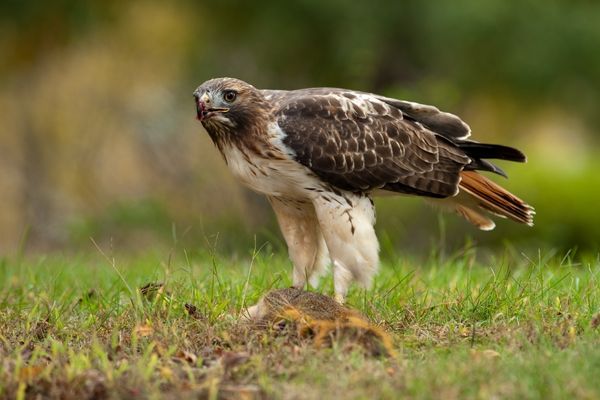
Hawks are birds of prey, in the same family as eagles, vultures, and ospreys. Hawks vary in size and shape, but typically have a slender body with a long tail.
They have keen eyesight and are able to spot their prey from great distances. Their sharp talons allow them to catch and kill small mammals and birds.
What are Eagles?
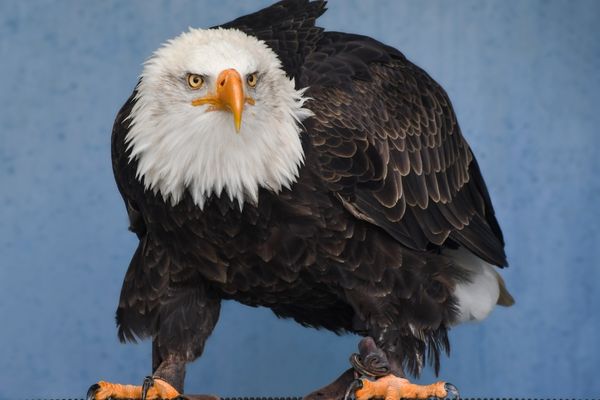
Eagles, like hawks, are also birds of prey and they share many similarities with their smaller cousins. However, eagles tend to be larger than hawks, with wingspans that can reach up to 8 feet in length.
They have powerful talons and sharp beaks designed for tearing apart larger animals, such as rabbits and fish. Eagles also have excellent eyesight which allows them to spot their prey from even farther away than hawks can.
Size of Hawk and Eagle

Hawks and eagles are both large birds of prey, but they have some distinct differences. Hawks are generally smaller than eagles, with longer tails and wings that are more pointed. Eagles, on the other hand, have larger bodies and broader wings.
One of the most distinguishing features of an eagle is its beak, which is much larger and more hooked than a hawk’s. Eagles also have talons that are more curved and stronger than those of a hawk, making them better adapted for hunting large prey. In general, eagles are more powerful flyers than hawks and can reach higher altitudes.
However, hawks are more agile in flight, making them better able to avoid predators and escape capture.
Diet of Hawk and Eagle
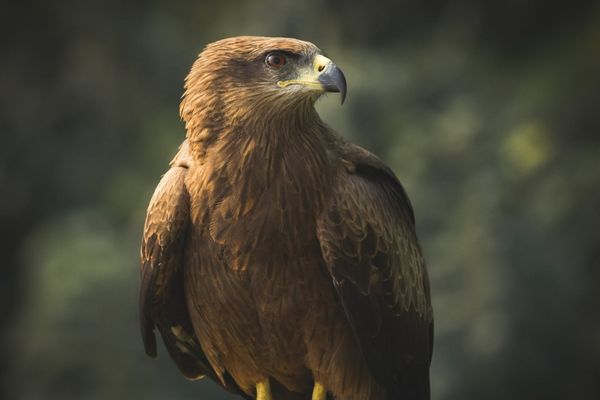
Hawks and eagles are both raptors or predators that hunt and eat other animals. However, there are some key differences between the two groups.
Hawks are typically smaller than eagles, with more slender bodies and shorter wingspans. Hawks also have relatively short tails, which they use for steering while flying. In contrast, eagles have much longer wings and tails, which helps them to glide for long periods of time.
Eagles also have stronger legs and talons, which allow them to kill larger prey. When it comes to diet, hawks tend to eat smaller animals, such as rodents or insects. Eagles, on the other hand, typically go after larger prey, such as deer or fish.
Thus, while both hawk and eagle diets can vary depending on the specific species, there are some general patterns that can be observed between the two groups.
Wingspan of Hawk and Eagle

There are several factors that contribute to the hawk’s incredible hunting prowess, but perhaps the most important is its wingspan. Hawks typically have a wingspan of between two and four feet, while eagles can have a wingspan of up to eight feet.
This gives hawks a much larger field of view and allows them to scan a wider area for potential prey. Additionally, the hawk’s smaller size means that it can maneuver more quickly and easily than an eagle.
Its powerful wings allow it to make sudden turns and dives, giving it an advantage when chasing down its prey. All of these factors combine to make the hawk one of the most skilled hunters in the bird world.
Nesting Habits of Hawk and Eagle
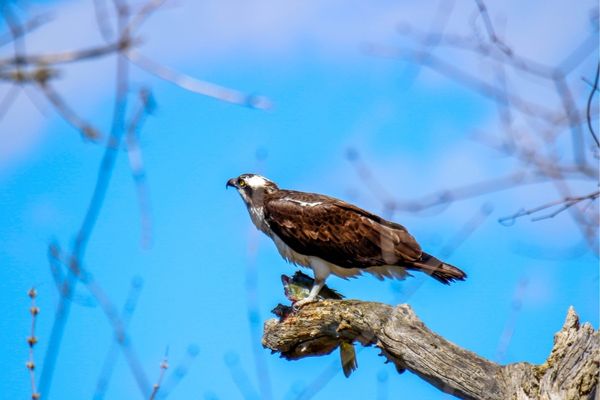
Hawks and eagles are both birds of prey that are known for their keen eyesight and hunting skills. However, there are some key differences between the two species when it comes to nesting habits. Hawks generally build their nests in trees, often using sticks and twigs to construct a platform.
Eagles, on the other hand, typically build their nests on cliffs or in tall trees. In addition, eagle nests tend to be much larger than hawk nests, as they can weigh up to 4 tons! Lastly, while hawk mothers will typically lay 3-5 eggs per clutch, eagle mothers can lay up to 3 times as many eggs per clutch.
These differences in nesting habits can help you to identify hawk and eagle nests if you’re lucky enough to spot one in the wild.
Vocalization of Hawk and Eagle

The vocalizations of hawks and eagles can be divided into two main categories: alarm calls and contact calls. Alarm calls are used to warn other birds of potential danger, while contact calls are used to maintain communication within a flock.
Hawks and eagles also use vocallyizations to communicate with their mate and young. Each species has a unique set of vocalizations, but there are some commonalities between the two. For example, both hawks and eagles use a shrill cry to indicate alarm or distress. Additionally, both species use a high-pitched trill to assert dominance over other birds. However, there are also some notable differences in the vocalizations of these two bird species.
Hawks tend to produce harsher, more raspy sounds, while eagles have a more mellow and musical quality to their calls. Additionally, eagle call notes are generally lower in pitch than hawk call notes. These differences in vocalization help birders to identify hawk and eagle species in the wild.
Strength of Hawk and Eagle

Of all the birds of prey, hawks and eagles are among the most formidable. These predators can reach speeds of over 200 miles per hour, making them some of the fastest animals on earth. They also have superb eyesight, able to spot prey from far away.
When it comes to strength, however, hawk and eagle species vary widely. Hawks tend to be smaller and more agile, while eagles are larger and have powerful talons. This difference in size and strength often gives eagles an advantage when hunting, as they can take down prey that would be too large for a hawk to carry.
In terms of speed and agility, hawks are typically the better flyers, able to maneuver effortlessly through dense forests and narrow spaces. Eagles, on the other hand, are built for straight-line flight, allowing them to cover vast distances with ease.
Ultimately, both hawk and eagle species are incredibly impressive predators. Each has its own unique advantages that allow it to thrive in its environment.
Speed of Hawk and Eagle

There are many factors to consider when determining whether a hawk or an eagle is faster. For instance, size plays a role in speed, with larger birds typically being able to reach higher speeds than smaller ones.
Hawks and eagles also have different wing shapes, which can affect their aerodynamics. In general, however, hawk species are faster than eagle species.
This is likely due to the fact that hawks are built for speed, while eagles are built for power. Hawks typically hunt in open areas, where they need to be able to chase down their prey.
Eagles, on the other hand, often hunt in forested areas, where they can use their powerful wings to soar and glide. As a result, hawks have evolved to be faster flyers than eagles.
How do hawks and eagles hunt for food?

Hawks and eagles are both birds of prey that use a combination of stealth, skill, strength, and speed to hunt for food. Both types of birds have an acute vision which allows them to spot potential prey from far away.
They also have powerful talons and beaks that can grasp and tear their prey apart. Hawks typically hunt during the day while eagles hunt at night and both will use their wings to soar through the air in search of food.
Hawks use a technique called ‘hovering’ which involves beating their wings rapidly as they hover above an area waiting for prey to appear.
They can also plunge dive from high altitudes, like mountains or cliffs, to catch their prey. Hawks prefer small mammals, reptiles, fish, and insects while eagles usually hunt larger animals like rabbits, squirrels or even waterfowl.
Eagles generally hunt in the same way as hawks but they rely more on soaring in circles and swooping down at the right moment when they spot potential prey. Their larger size and wingspan give them the advantage of being able to catch bigger animals, like deer or even small sharks.
Both hawks and eagles have excellent eyesight as well as hearing which helps them locate their prey from a distance. They also use wind currents to help carry them through the air while they are hunting. When they spot their potential meal, they will swoop down and use their talons to grab hold of it.
Hunting is a critical part of the life cycle for both hawks and eagles. They are highly adapted predators that have evolved over time to become very efficient hunters with the ability to survive in a wide range of habitats.
With skill, stealth, and a bit of luck, these birds can successfully hunt for food to sustain themselves.
Final thoughts
When it comes to bird-of-prey comparisons, there’s no one-size-fits-all answer. It really depends on what you need the bird for and what its environment will be like.
Generally speaking though, hawks are smaller than eagles and tend to fly at lower altitudes. They have a diverse diet that includes small mammals, reptiles, and insects. They usually hunt alone and can be aggressive when defending their territory. Eagles tend to be larger than hawks and fly at higher altitudes.
They have a more restricted diet that mainly focuses on fish and carrion. Eagles are typically found in pairs or small groups and will rarely show aggression unless absolutely necessary.
Frequently asked questions
Which birds of prey have the best eyesight?

When it comes to birds of prey, there are two that stand out above the rest in terms of eyesight: hawks and eagles. Hawks are known for their exceptional vision, which allows them to spot prey from great distances.
Eagles, on the other hand, have even sharper eyesight than hawks. In fact, their eyes are so powerful that they can spot a rabbit moving from more than a mile away! While both hawks and eagles have amazing eyesight, eagles just barely edge out hawks in terms of vision.
Which birds of prey are more powerful?

When it comes to birds of prey, there are two that stand out above the rest: hawks and eagles. Both are powerful predators with sharp eyesight and talons that can inflict serious damage.
But which one is more powerful? In many ways, it depends on the situation. Hawks are generally smaller than eagles, but they make up for it with their speed and agility. They can reach speeds of up to 200 miles per hour when diving for prey, making them incredibly difficult to escape from.
Eagles, on the other hand, have a greater wingspan and heavier body, giving them more lifting power. They can carry prey up to four times their own weight, meaning they can take down larger animals such as deer and rabbits. So, while both hawks and eagles are formidable predators, each has its own strengths that make it more powerful in certain situations.
Which birds of prey are fastest?

Birds of prey are some of the most impressive creatures in the animal kingdom. With their powerful wings and sharp talons, they are more than a match for most prey. But which birds of prey are the fastest? That honor goes to two birds: the peregrine falcon and the golden eagle.
These birds can reach speeds of up to 200 miles per hour when diving for their prey. By comparison, the fastest hawk, the goshawk, tops out at around 50 miles per hour. So if you’re ever lucky enough to see one of these amazing predators in action, be sure to watch out for their lightning-fast dives!

